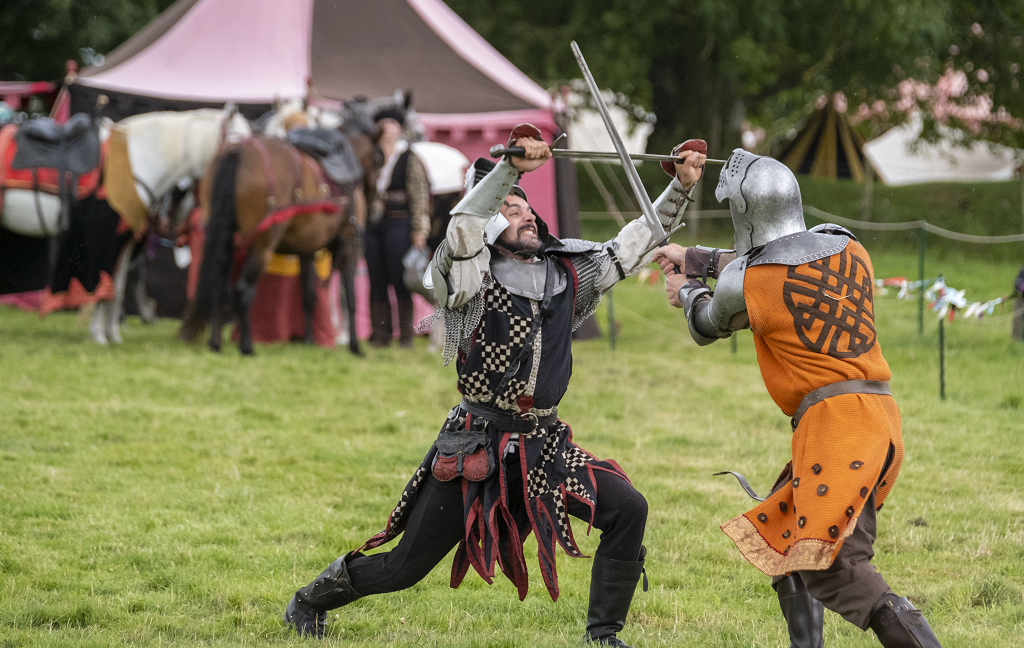On 25 or 26 February 1449, two teams – one Scottish and one Burgundian – emerged from their tents at Stirling Castle. All were heavily armed with lances, axes, swords, and daggers. They were about to engage in combat à outrance – to the death – or until the king called a halt to proceedings.
What was the story behind this tournament, in which the stakes were so high?
Dynastic discussions
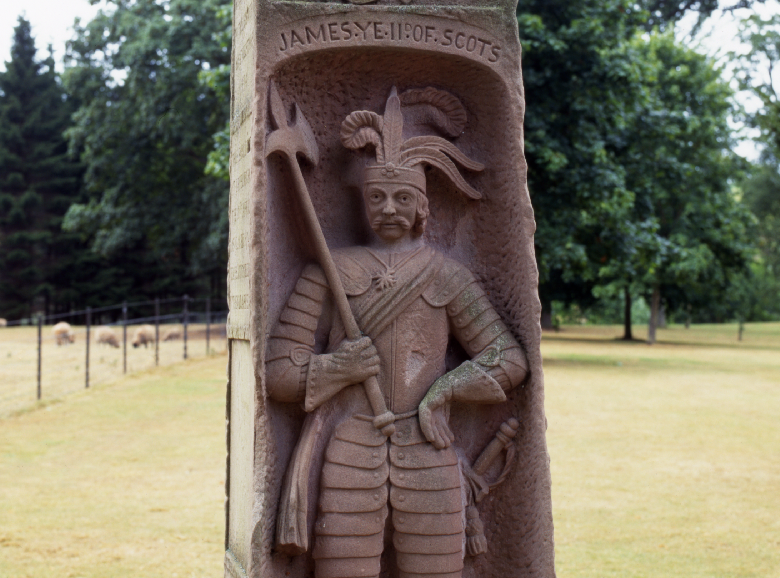
James II depicted in a statue at Dryburgh Abbey.
The king of Scots at the time was the 18-year-old James II. As he entered adulthood, it was important for him to find a wife and produce heirs to carry on the Stewart dynasty.
Negotiations for his marriage had begun as early as 1446. James’s proposed bride was Mary, daughter of the duke and duchess of Guelders in the Low Countries. She was the great-niece of the rich and powerful duke of Burgundy.
During these discussions, the Burgundians challenged the Scots to a tournament, which the Scots accepted. Philip the Good, duke of Burgundy, paid for the challengers to travel to Scotland for the event.
Celebrity challengers
These were Burgundians Jacques de Lalaing and Simon de Lalaing, and Hervé de Mériadec, a Breton squire. Jacques was an internationally famous tourneyer with a reputation for performing outstanding feats of arms. Simon, his uncle, was an experienced military commander who also had diplomatic experience. He may have been involved in negotiations with James.
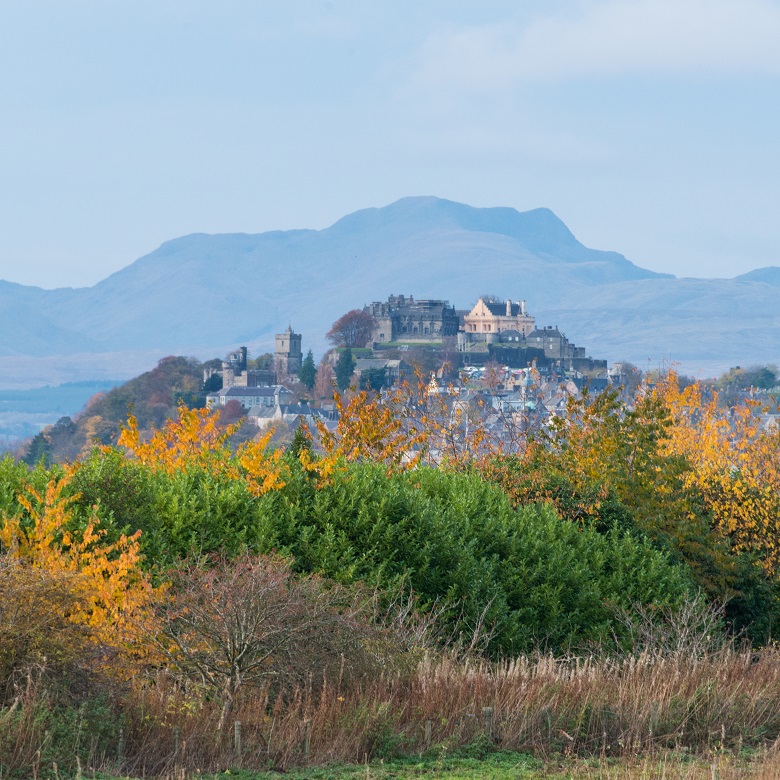
Their Scottish opponents were all members of, or connected to, the Douglas family, which had been involved in the marriage discussions.
They were headed by James Douglas, master of Douglas and brother of William, 8th earl of Douglas. He later became 9th earl of Douglas. He was accompanied by James Douglas of Ralston and John Ross of Hawkhead. The three were ‘renowned everywhere as valiant and powerful knights’. The Douglas party was accompanied by, it was said, an entourage of four or five thousand men.
An ostentatious arrival
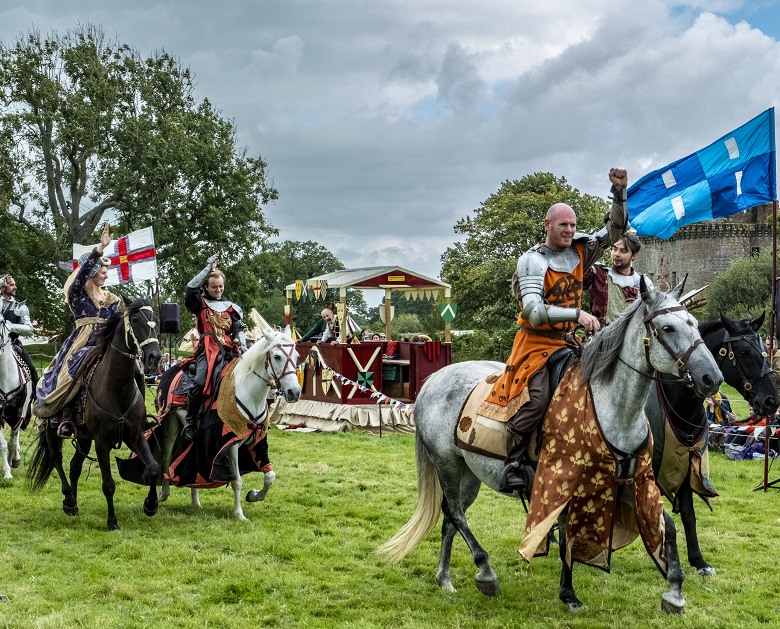
Could the entrance of the Burgundians have been similar to that made by the combatants and their entourage at our popular “Spectacular Jousting” events?
The Burgundians cut glamorous figures when they arrived at the tournament enclosure. They were mounted on expensive horses, dressed in luxurious outfits of black velvet and satin, lined with fur, and accompanied by men carrying their weapons. They paid their respects to the king before retiring to their tent to put on their armour and their coats of arms.
Then the Scots arrived and did likewise. They also knelt before the king and were all knighted, or re-knighted, by him.
Axe action
The format of the tournament was three single combats taking place simultaneously. The Burgundians, having conferred beforehand, strategically threw away their lances and used their axes instead.
James Douglas of Ralston strode towards de Mériadec and struck him with his lance, tearing the sleeve of the Breton’s coat of arms. But de Mériadec, who was ‘hardy and highly skilled in warfare’, retaliated by delivering such a hard blow of his axe on Douglas’s helmet that Douglas staggered and fell to the ground, where de Mériadec continued to hit him.
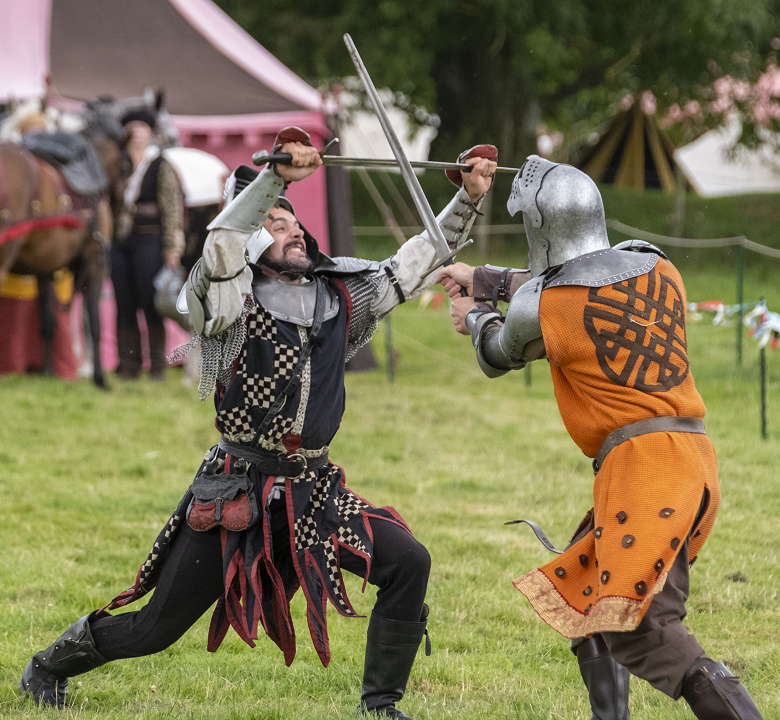
The hand-to-hand combat was incredibly fierce, though sources tell us the challengers opted for axes over swords.
Simon de Lalaing and John Ross fought each other with their axes for some time, both being tall, physically robust, accomplished knights. Eventually, Simon’s ‘great and horrible blows’ of the axe overpowered Ross, who began to weaken and lose his breath.
Jacques de Lalaing managed to deprive James, master of Douglas of both his lance and his axe. Douglas tried to take his dagger to de Lalaing’s face, as the latter’s visor was raised, but de Lalaing fought back. He grabbed Douglas, lifted him up, and threw him down onto the ground, then repeated this so that Douglas, with his visor closed, was struggling to breathe. It was said that two of Douglas’s servants, seeing him in trouble, jumped into the enclosure to try to help him, but that the king objected, and they ran off.
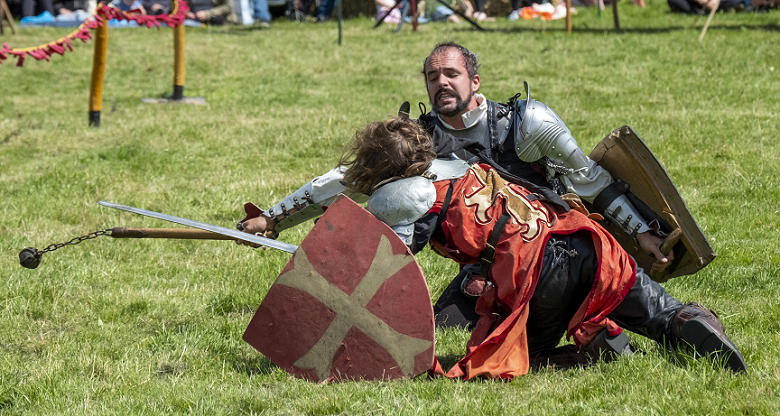
The King calls it off
The Burgundians were on the point of winning, and could have legitimately killed their opponents, but the king threw down his baton and ordered his guards to bring the six combatants to him.
It was said that, while de Mériadec was held by the guards, James Douglas of Ralston tried to hit him in the face, which the king was not happy about.
He ‘told them that they had all performed well and valiantly, and that the tournament was at an end, and that he wanted them to be good friends.’ It seems that any disagreements were put aside, as the tournament was followed by a grand banquet for the competitors.
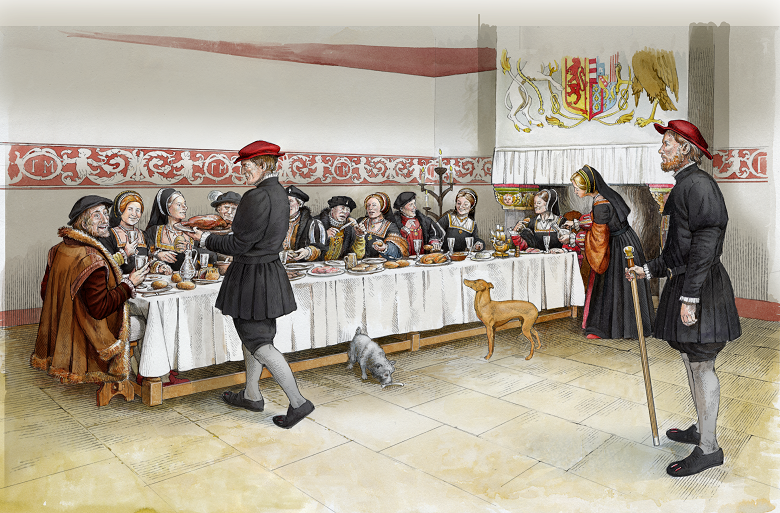
An illustration by David Lawrence of a banquet at Stirling Castle.
Marriage secured
The challengers returned home and, on 1 April 1449, a marriage alliance between Scotland, Burgundy, and Guelders was sealed. Mary of Guelders departed the Low Countries for her new role as queen. Beforehand, a tournament had been held in her honour at Bruges. Jacques de Lalaing was again triumphant.
Mary travelled to Scotland with a convoy of fourteen ships. Among her entourage was Isabelle de Lalaing, Jacques’ sister, who stayed in Scotland with Mary for over a year. James ratified the marriage contract at Stirling in advance of the celebration of the marriage itself. That took place at Holyrood Abbey, on 3 July 1449.
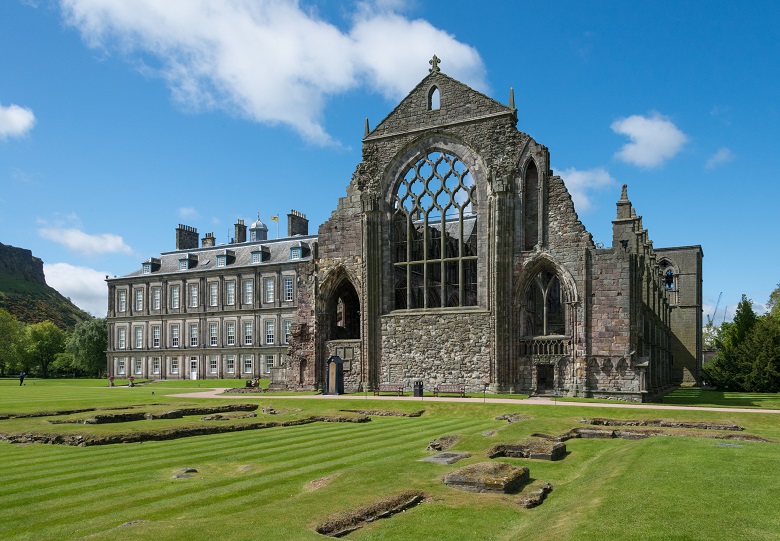
Holyrood Abbey, where James II married Mary of Guelders
Although the Douglases had been unable to beat the renowned Jacques de Lalaing, they had shown that Scotland was part of a chivalric culture in which tournaments featured prominently. As part of the sensitive negotiations for James and Mary’s marriage, it was their participation that mattered. Or that is what they may have been telling themselves that night…
Get your new guide!
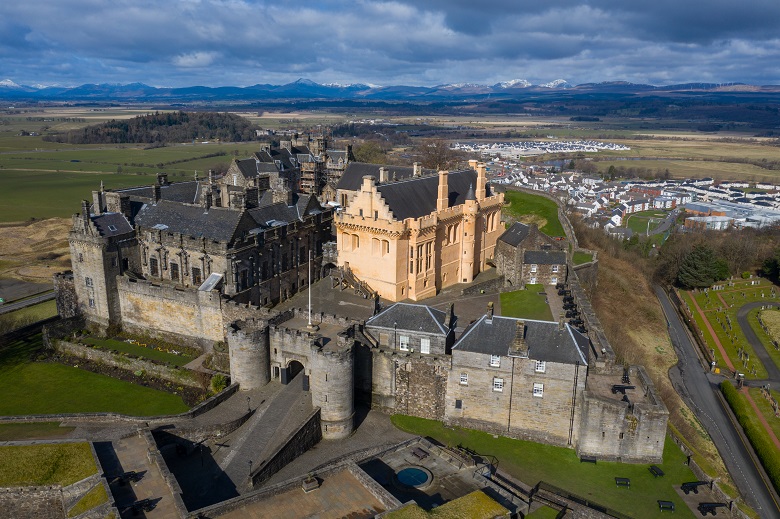
There’s more stories like this in our brand new Stirling Castle guidebook, compiled by the brilliant HES Interpretation Team.
It’s packed with all the latest research, previously unseen illustrations and terrific tales from the famous stronghold. BE sure to pick one up on your next visit!

